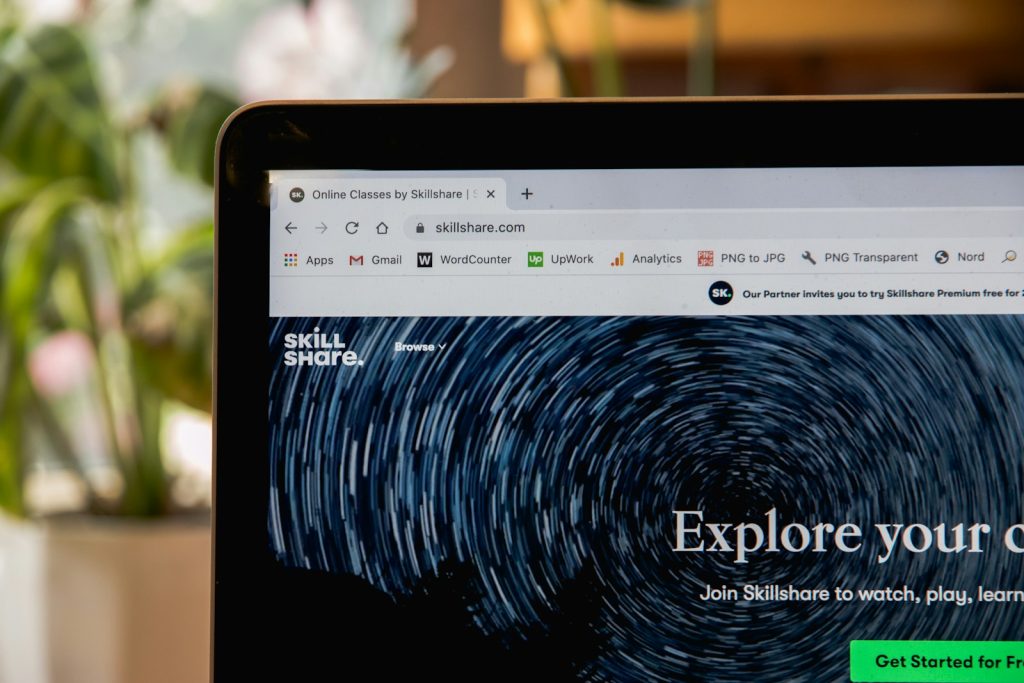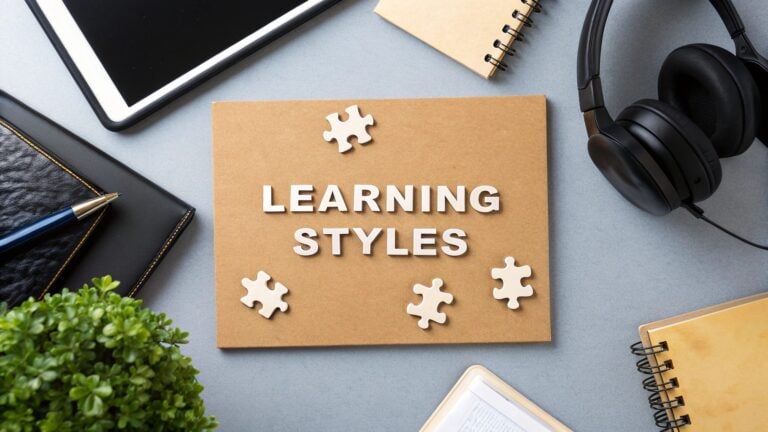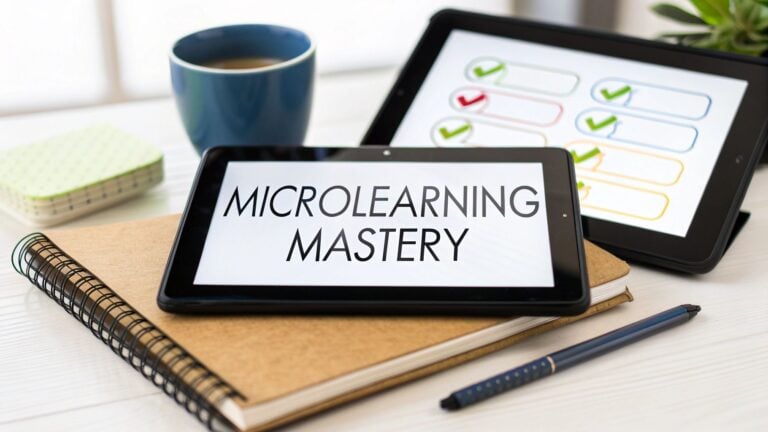How to Improve MOOCs on Online Courses: A Beginner Guide

Massive Open Online Courses (MOOCs) have revolutionized education by breaking down traditional barriers to learning.
With just an internet connection, anyone from anywhere in the world can access quality educational content from prestigious institutions and expert instructors. This democratization of knowledge has opened doors for millions who previously had limited access to educational opportunities.
Despite their transformative potential, MOOCs face persistent challenges. Completion rates often hover below 10%, engagement can wane after initial excitement, and the learning experience sometimes feels isolating compared to traditional classrooms.
The good news?
These challenges can be addressed through thoughtful improvements to how MOOCs are designed and delivered.
Why MOOCs Matter
Before diving into improvement strategies, it’s worth understanding why MOOCs represent such an important educational innovation.
Unlike traditional courses with limited enrollment and substantial fees, MOOCs offer unlimited participation and typically free or low-cost access to course materials. They include standard educational components like video lectures, readings, and assessments, but add interactive forums that connect global communities of learners.
“MOOCs aren’t just about content delivery. They’re about creating global learning communities that transcend geographical, financial, and social barriers.”
The real value of MOOCs lies in their ability to democratize education.
- A student in rural India can take the same course as someone at Harvard.
- A working professional can advance their skills without leaving their job.
- A curious retiree can explore new intellectual territories without formal enrollment.
This accessibility makes MOOCs a powerful tool for lifelong learning and professional development.
1. Create Truly Interactive Learning Experiences
Many MOOCs still rely heavily on passive video lectures, essentially replicating traditional lectures in digital format. Truly effective MOOCs transform this model by embedding interactivity throughout the learning journey.
Interactive elements might include simulation exercises where students apply concepts in virtual scenarios, coding environments that provide immediate feedback, or branching case studies where learners make decisions and see consequences unfold. These active learning experiences increase engagement and improve knowledge retention.
Forums and discussion boards serve as the social backbone of MOOCs, but they need thoughtful cultivation. Instructors who actively participate in discussions, pose thought-provoking questions, and highlight exceptional student contributions create vibrant communities of practice.
Some successful MOOCs include weekly live sessions where instructors address common questions and elaborate on complex topics, creating a sense of real-time connection.
2. Personalize the Learning Journey
One-size-fits-all education rarely serves all learners effectively. The most innovative MOOCs now use adaptive learning technology to customize the educational experience based on individual performance, preferences, and goals.
Personalization can take many forms, from adjusting the difficulty of practice problems based on student mastery to recommending supplemental resources for areas where a student struggles.
Some platforms analyze learning patterns to suggest optimal study times or content formats that align with personal learning styles.
The future of MOOCs lies in increasingly sophisticated personalization. Imagine a course that recognizes when you’re struggling with a particular concept and automatically provides additional explanations using a different approach or offers a virtual tutoring session. These adaptive systems can transform the somewhat rigid structure of early MOOCs into responsive educational experiences that meet each learner where they are.
3. Reimagine Course Design for Digital Learning

Effective MOOCs aren’t just digitized versions of traditional courses, they’re designed specifically for the online environment. This means rethinking content organization, delivery methods, and assessment strategies.
The most engaging MOOCs break content into digestible segments, typically 6-10 minutes of video followed by interactive elements that reinforce key concepts. This microlearning approach accommodates shorter attention spans in digital environments and creates natural break points for reflection and application.
Visual design plays a crucial role as well. Clean, intuitive navigation, thoughtful use of multimedia, and clear signposting help learners move through material efficiently without cognitive overload. Courses that incorporate storytelling elements or narrative arcs create emotional engagement that sustains motivation throughout the learning journey.
4. Provide Meaningful Feedback and Assessment
Assessment in MOOCs goes beyond measuring achievements, it’s a critical component of the learning process itself. The most effective systems provide immediate, specific feedback that guides improvement rather than simply indicating correct or incorrect answers.
Automated systems can provide basic feedback at scale, but peer assessment adds another valuable dimension. When properly structured, peer review activities both generate useful feedback and deepen learning for the reviewers themselves. Some platforms use calibrated peer review, where students first evaluate benchmark submissions to align their understanding of assessment criteria before reviewing peers.
Self-assessment tools also play an important role, encouraging metacognition and self-directed learning. Reflection prompts that ask students to articulate their understanding, identify areas of confusion, and develop personal learning strategies build critical thinking skills that extend beyond the course content.
5. Add Meaningful Credentials and Incentives
Motivation often wanes in the absence of external structure or recognition. Offering meaningful credentials can significantly boost completion rates and learner satisfaction. Universities and organizations that recognize MOOC credentials for academic credit or professional advancement create tangible value that drives commitment.
Beyond formal credentials, digital badges for achievement milestones provide incremental motivation throughout the course. Some platforms have implemented gamification elements such as progress visualizations, achievement unlocks, and friendly competition to tap into intrinsic motivation and create a sense of momentum.
“Recognition transforms learning from a solitary pursuit into a validated accomplishment that can open doors professionally and academically.”
Many successful MOOCs now offer tiered recognition options, from free certificates of completion to paid verified credentials that carry more weight with employers. This flexible approach maintains the open access philosophy while creating sustainable revenue streams and offering additional value for those who need formal recognition.
6. Optimize for Mobile and Flexible Learning

Today’s learners expect educational experiences that fit into their lives, not the other way around. MOOCs that excel in this environment offer truly responsive design that works seamlessly across devices, allowing learners to switch between laptop, tablet, and smartphone without disruption.
Mobile optimization goes beyond making content viewable on small screens. It means rethinking interactive elements for touch interfaces, ensuring videos load quickly on cellular connections, and creating offline access options for learners with intermittent connectivity. The best platforms remember where learners left off across devices, creating a truly continuous experience.
Some innovative MOOCs are now incorporating microlearning modules specifically designed for mobile consumption during small pockets of available time. These bite-sized units can be completed during a commute or lunch break, making consistent progress possible even for the busiest professionals.
7. Foster Authentic Community Building
The “massive” nature of MOOCs creates scale but can also lead to feelings of isolation. Counterintuitively, creating smaller learning communities within the larger course can dramatically improve engagement and persistence.
Some platforms automatically group learners into cohorts based on start date, geographic location, or professional background, creating more manageable communities where meaningful connections can form. Others encourage students to self-organize around specific interests or projects related to course material.
Instructor presence plays a crucial role in community building. Regular video updates, thoughtful responses to discussion threads, and recognition of exceptional contributions create a sense that someone is “home” in the digital classroom. Some courses successfully incorporate alumni as community facilitators, creating sustainable community models that extend beyond a single course iteration.
8. Provide Comprehensive Support Resources
Even the most intuitive MOOCs benefit from robust support systems that address both technical and academic challenges. Accessible technical support ensures that platform issues don’t derail the learning experience, while academic support resources help learners overcome content-related obstacles.
Effective support ecosystems might include searchable FAQ databases, peer-to-peer help forums, teaching assistant office hours, and AI-powered chatbots that can address common questions instantly. Supplemental resources like glossaries, concept maps, and additional practice materials accommodate different learning needs and preparation levels.
Some platforms now offer optional tutoring services or study groups for an additional fee, creating a middle ground between fully self-directed learning and traditional instructor support. These tiered support models maintain accessibility while offering additional assistance for those who need or want it.
The Future of MOOCs: Continuous Evolution
MOOCs continue to evolve rapidly, incorporating advances in artificial intelligence, learning science, and user experience design. The most successful platforms embrace this evolution, continuously refining their approaches based on learner data and emerging best practices.
The future likely holds increasingly immersive learning experiences through augmented and virtual reality, more sophisticated adaptive learning algorithms, and tighter integration with professional credentialing systems. As global internet access expands, MOOCs will reach even more remote and underserved populations, further democratizing education.
What remains constant is the transformative potential of open access to quality education. By implementing these improvement strategies, MOOC creators can help fulfill the promise of truly accessible, engaging, and effective learning for anyone with the desire to learn.






